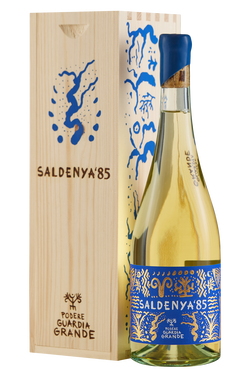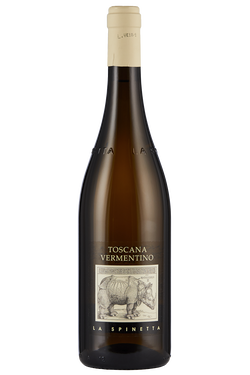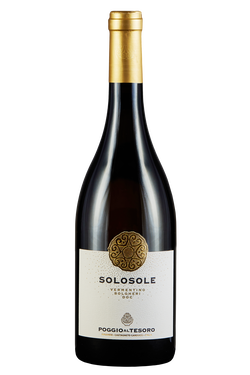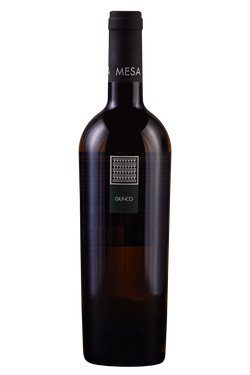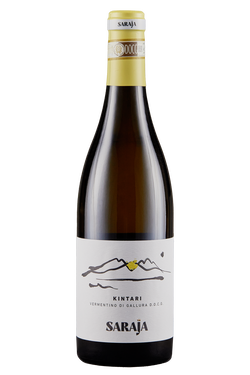- Wines >
- White wines >
- Vermentino
The origins of Vermentino
As it happens for many vines with a long history, the origins of Vermentino are uncertain. The most accredited hypothesis is that, from Spain or Portugal, Vermentino reached France, and then arrived on the Italian coasts at the end of the XIV century. Vermentino would have spread first in Liguria, coming from the nearby Côte d'Azur, then in Tuscany, arriving up to Elba Island, Corsica and Sardinia, probably from the port of Marseille. Also the name Vermentino has dubious origins. It is hypothesized that it comes from vermena, medieval Latin term for slender and young branches. To be sure, though, it’s his most recent story. Vinified in various typologies in the past centuries, including sweet wines such as passito, today, thanks to an excellent work of Italian wine makers, people tend to vinify Vermentino alone, in order to exalt its qualities. To do this, we went to an early harvest, so that the must retains a higher acidity. Today Vermentino is one of the most loved Tuscan and Ligurian white wines. In Sardinia, even, it has become the most common among Sardinian white wines, alongside the other prince of Sardinia, the red Cannonau. A variety of Sardinian Vermentino, Vermentino di Gallura, is the only DOCG wine among all Sardinian wines.
Vermentino: from ancient Greece to Sardinia
In ancient Greece, Vermentino, known by other names or regional variations, was one of the white vines used for the production of wine. It is believed that this vine has very ancient origins, with a history that dates back several centuries. In Greece, viticulture and wine production had a significant importance in culture and economy. The Greeks were known to cultivate different varieties of grapes, including those used to produce fresh and aromatic white wines. Even if the specific information about Vermentino during the period of ancient Greece can be limited, it is plausible that similar or ancestral varieties have been cultivated and exploited to create wines that reflected the preferences and vinification techniques of the time. Its diffusion is mainly linked to the coastal regions of the Mediterranean, but it has become particularly famous in Italy, especially in Sardinia. The history of Vermentino is characterized by its ability to adapt to different soils and climates, producing fresh, aromatic and full of personality wines. In Sardinia, this grape has found an ideal habitat, thanks to its warm climate and proximity to the sea, which gives the wines a unique character.
Vermentino of Sardinia and Tuscany: main differences
Depending on the area of cultivation, Vermentino also expresses significantly different characteristics. The microclimate and the Sardinian soil, in fact, make Vermentino di Sardegna full-bodied and aromatic, with hints of Mediterranean scrub and an even more accentuated sapidity. Vermentino toscano, instead, is a fresh wine with more fruity notes, with hints of citrus to which are added nuances of almond in the elegant finish. To remember are the Bolgheri DOC Vermentino with a straw yellow color with greenish reflections and mineral aromas. Next we know the Maremma Toscana DOC Vermentino of delicate yellow color with green reflections, dry and soft on the palate. The king of Sardinian Vermentino is undoubtedly Vermentino di Gallura.
Vermentino di Gallura: characteristics of DOCG
In the dry and ventilated climate of Gallura, with vineyards positioned in sunny hilly areas, Vermentino finds the ideal conditions to thrive and fully express their best characteristics. Only DOCG of Sardinia since 1996, Vermentino di Gallura is a wine of good structure and alcohol, sapid, with a straw yellow color and aromas recalling white flowers, yellow fruit and notes of Mediterranean maquis. To be regulated, the base must be composed of at least 95% Vermentino grapes, with a possible 5% of non-aromatic white berried grapes suitable for cultivation in Sardinia. Not only can it be vinified also in the superior and late harvesting typologies, but it is possible to obtain wines with bubbles (sparkling and sparkling typology) and sweets (passito). Vermentino di Gallura, from DOCG, has at least 11 degrees, which rise to 12 for the higher versions and late harvest, and drop to 10 for the sparkling or sparkling version.
Vermentino, the best pairings at the table
As we have seen, Vermentino expresses different characteristics according to the production region and can be vinified in different types. This makes it a quite versatile wine, suitable for many culinary combinations. Despite this, Vermentino is also the grape of the Tyrrhenian Sea and, as such, it seems to have been born to be accompanied by fish dishes and, in particular, shellfish and molluscs, especially if raw. Vermentino di Gallura goes perfectly with fish soups, especially if typically Sardinian, such as Sardinian cassola or fish soup with casteddaia, very suitable for Sunday lunch. Tuscan Vermentino, Bolgheri or Maremma Toscana DOC, is perfect for crustaceans. It is excellent for a refined aperitif with friends based on white wine and raw shrimp, and is a must try with the Canocchie alla Livornese. Vermentino from Liguria, and especially that of the Colli di Luni, fresh and fruity, is the most versatile of the family. It goes perfectly with typical Ligurian dishes such as trofie with pesto and focaccia with cheese, but also with first courses based on mushrooms and fish such as sea bass or baked ombrina.







